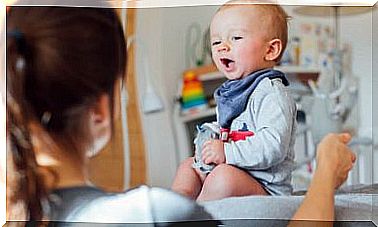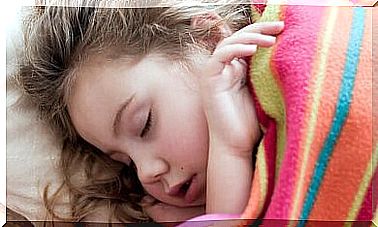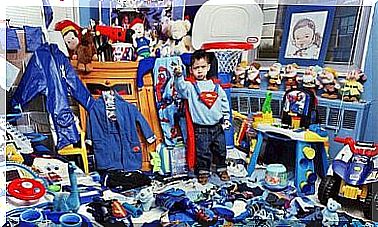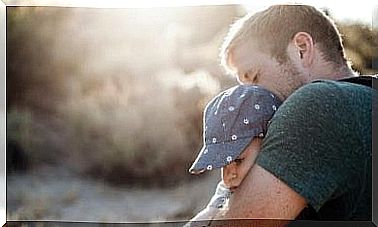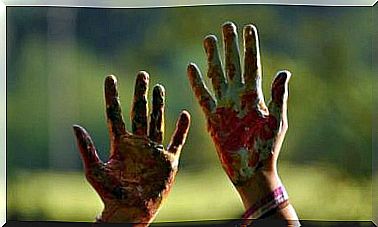Displaced Teeth In Children: What To Do? – Being Parents
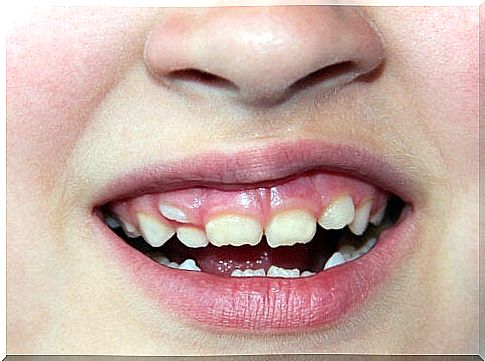
Crooked or displaced teeth in children are a very common concern of parents. The observation of the misaligned smile generates social problems for the child, who may be teased and ashamed of the appearance of his mouth. This often results in low self-esteem.
However, the consequences are not only aesthetic and social. The presence of displaced teeth can lead to other alterations in the mouth which we detail below. In addition, we give you some solutions to act in this case.
Most common problems of displaced teeth in children
As we have already mentioned, one of the consequences of having displaced teeth in children is how they make a smile look. Plus, a bite that doesn’t fit properly can cause other changes.
The child may have difficulty chewing, eating, and speaking, or have headaches or earaches. In addition, crooked and clenched teeth retain the remains of food and make oral hygiene difficult, promoting the occurrence of various diseases in the mouth.
We now detail the main consequences of displaced teeth in children.
Aesthetic issues
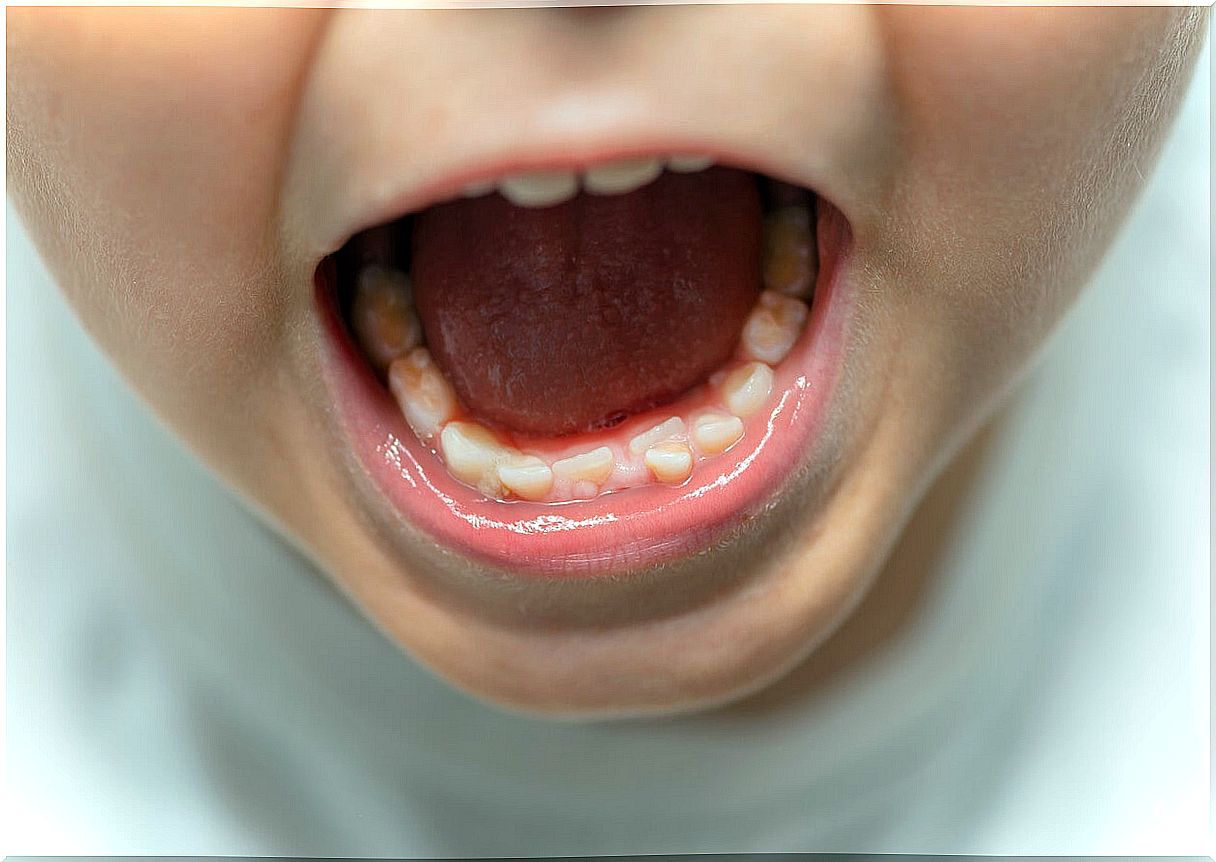
As we have already mentioned, misplaced teeth in children change the appearance of their smile. People tend to classify harmonious and aligned teeth as beautiful. On the other hand, having crooked and displaced teeth does not meet this standard of beauty.
It hurts the self – esteem of the little ones, who may be ashamed of the appearance of their mouths. In addition, they can be objects of mockery and harassment. This increases the feeling of insecurity vis-à-vis their own image. Hiding a smile is a fairly common behavior among children who suffer from this problem.
Poor oral hygiene
Misplaced teeth in children interfere with oral hygiene. This is because food accumulates in certain areas which are also inaccessible to brushing and flossing.
Bacterial plaque increases in these areas and can calcify, giving rise to tartar deposits. This large proliferation of bacteria leads to other oral problems such as bad breath, tooth decay and gingivitis.
Caries, a consequence of displaced teeth in children
The accumulation of dental plaque in areas where neither a brush nor dental floss can remove it, the risk of cavities increases. The accumulated bacteria metabolize the carbohydrates in the diet and produce an acid capable of demineralizing the teeth.
This repeated and sustained activity destroys the hard tissue of the teeth. At first, this manifests as a white spot which, if continued, darkens. Then, holes appear that start in the enamel and progress to the dentin, and can even affect the pulp.
Gingivitis
Gingivitis also results from the buildup of bacterial plaque in areas where it is difficult to remove. The microorganisms generate an inflammatory response in the gum tissue, which swells, hurts, turns red and bleeds easily.
If left untreated, it can progress to periodontitis or pyorrhea. While it’s not as common in children, it is a possibility. Here, the infection is much deeper, affecting the tissues that support the tooth, such as the periodontal ligament and bone.
Tooth wear
The bite works well when the upper and lower teeth are harmoniously linked, like a perfect gear. When there are crooked and displaced teeth, sudden shocks and contacts are generated which end up injuring the teeth involved.
It is common to observe the progressive wear of certain areas of the tooth surface as a result of the incorrect position of the teeth. As they are not aligned, atypical contacts are generated during the bite which rub and wear away the hard tissues of the elements.
Some solutions for displaced teeth in children
To correct misplaced teeth in children, it is necessary to carry out orthodontic treatment. There are several alternative devices to use which will depend on the particularity of each clinical case, the age of the patient, their needs and possibilities.
Here are the orthodontic treatments most often used to solve the problems of misplaced teeth in children.
Orthodontics with braces
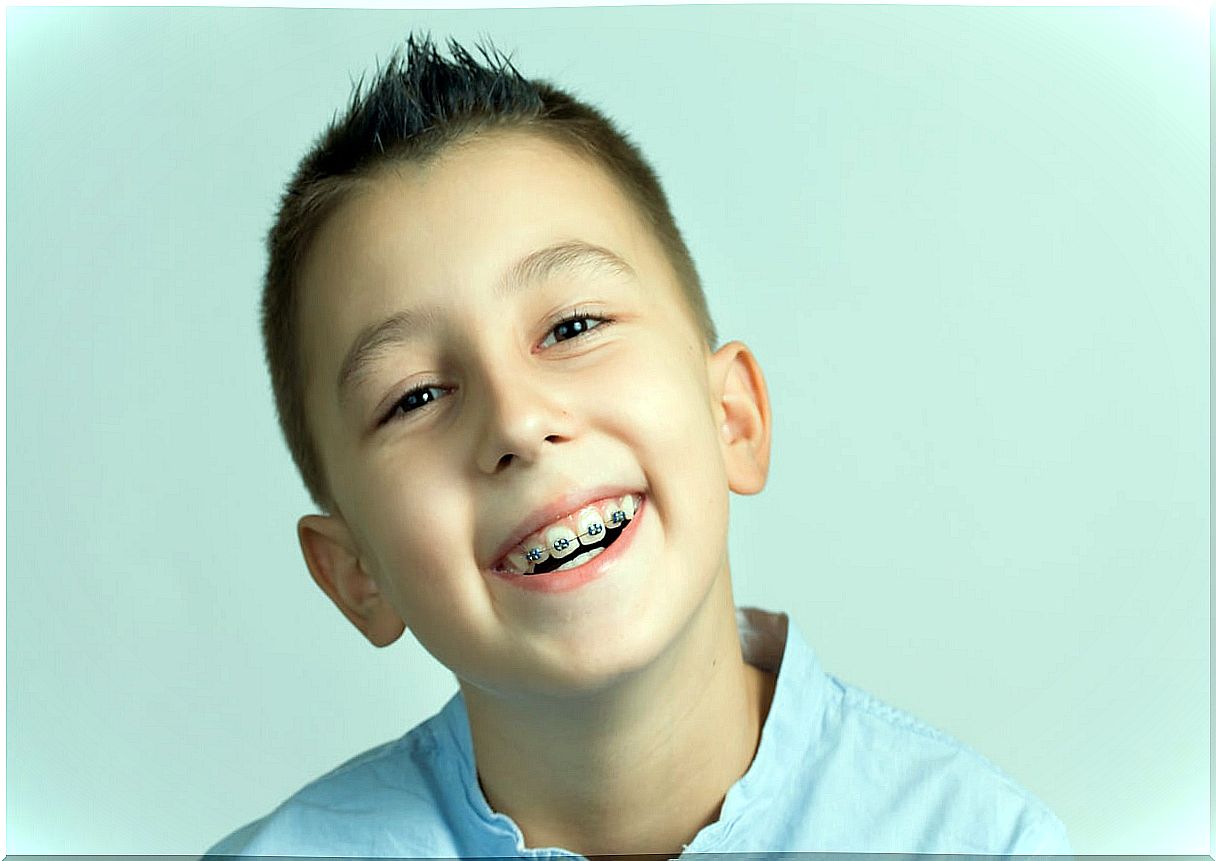
Bracket orthodontics is a fixed appliance that the dentist places on dental components and that the patient cannot remove. It consists of brackets , elements that adhere to the surface of the teeth and the metal arch that crosses them. Sometimes other attachments are needed to add to this system.
The structures of the appliance generate forces capable of mobilizing the teeth. They are indeed able to move each tooth individually in any direction.
These devices are usually applied during adolescence because it takes advantage of the fact that the bone continues to grow. There are different materials that can meet the aesthetic needs and economic possibilities of the patient.
Therefore, there are sapphire, ceramic and lingual orthotics available for those who prefer the devices to go unnoticed. Then there are cheaper metal rings which can be combined with elastic bands in different colors to make the process more fun.
Invisible orthodontics to adjust displaced teeth in children
Invisible orthodontics is characterized by the fact that it is removable, that is, the patient can put on and take off the device. It is an aesthetic and comfortable method that can be used in children, obtaining the same results as with fixed orthodontics.
In addition, it consists of a group of transparent plastic trays specially designed for the mouth of each patient. These are replaced from time to time so that they exert the forces necessary to mobilize the teeth.
Since they can be removed, the patient can eat and wash their mouth normally. However, the success of therapy depends on their use for most of the day, at least 22 hours a day.
When is the best time to start orthodontics?
Frequently going to dental check-ups can detect inconvenience over time. If the dentist discovers a problem in the bite, they will begin to resolve it or forward the file to the orthodontist to prevent the situation from progressing and getting worse.
The earlier the intervention, the easier and more comfortable the treatment and the better the results. Going to the orthodontist from the age of 6 and continuing regular health check-ups allows you to follow the dental eruption. So, if there is any alteration, it is detected early and the treatment is faster.
It is best to make these corrections as soon as possible in young patients in whom the bone is still growing and is soft. In adults, treatments are longer, more expensive and more difficult.
Frequent visits to the dentist are key
Displaced teeth in children can cause many problems in the mouth, and also affect the appearance of the child. Regular visits to the dentist allow early detection and resolution of these situations. This not only improves the quality of life of the child, but also prevents longer and more expensive treatments in the future. Maintaining good dental hygiene is also vital. Thanks to these practices, you allow the little ones to smile more naturally.
